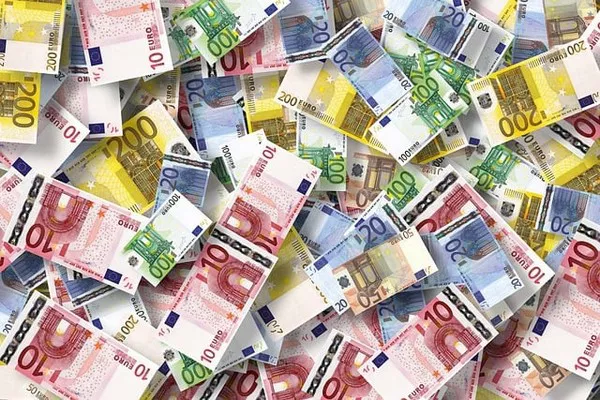In the wake of unprecedented global challenges, Europe, like many other regions, finds itself grappling with the economic fallout of the COVID-19 pandemic. The onset of recessionary pressures has left policymakers, businesses, and citizens alike pondering a crucial question: How long will recession last in Europe? While forecasting the duration of a recession is inherently complex, understanding key economic indicators and contextual factors can provide valuable insights into the trajectory of Europe’s recovery.
Understanding the Current Economic Landscape:
To forecast the duration of the recession in Europe, it’s imperative to first assess the current economic landscape. The COVID-19 pandemic has significantly disrupted economic activity, leading to widespread job losses, supply chain disruptions, and decreased consumer spending. Government-imposed lockdowns and social distancing measures further exacerbated these challenges, plunging many European economies into recession.
Key Economic Indicators:
Several key economic indicators serve as barometers for assessing the duration and severity of a recession. Unemployment rates, GDP growth, consumer spending, and business investment are among the most critical metrics to monitor.
Unemployment Rates:
Elevated unemployment rates are a hallmark of recessionary periods, reflecting diminished demand for labor and widespread job losses. Throughout Europe, unemployment rates have surged in the wake of the pandemic-induced economic downturn. While government support programs have mitigated some of the impact, the persistence of high unemployment levels suggests a prolonged recovery period.
GDP Growth:
Gross Domestic Product (GDP) growth is another crucial indicator of economic health. Negative GDP growth over consecutive quarters typically signifies a recession. In Europe, GDP contractions have been significant, with several countries experiencing double-digit declines in economic output. The pace of GDP recovery will largely determine the duration of the recession, with sluggish growth prolonging the economic downturn.
Consumer Spending:
Consumer spending plays a pivotal role in driving economic activity. However, the pandemic has prompted widespread uncertainty and caution among consumers, leading to reduced spending levels. High unemployment, income losses, and health concerns have all contributed to subdued consumer confidence. As such, a sustained recovery in consumer spending is essential for exiting the recessionary cycle.
Business Investment:
Business investment serves as an indicator of corporate confidence and future economic prospects. Amid economic uncertainty, businesses often scale back investment plans, further dampening economic growth. In Europe, investment levels have declined as companies prioritize cost-cutting measures and liquidity preservation. Restoring confidence and incentivizing investment will be critical for fostering economic recovery.
Contextual Factors Shaping the Recovery:
While economic indicators provide valuable insights, contextual factors also play a significant role in shaping the duration of the recession in Europe.
Vaccine Rollout and Public Health Measures:
The success of vaccine rollout efforts and the effectiveness of public health measures will heavily influence the trajectory of the recession. Containing the spread of the virus and achieving widespread vaccination are paramount for restoring confidence, reopening economies, and reigniting growth.
Fiscal and Monetary Policy Response:
The response of governments and central banks to the economic crisis will impact the speed and efficacy of the recovery. Fiscal stimulus measures, monetary policy accommodation, and targeted support for industries hardest hit by the pandemic can mitigate the depth and duration of the recession.
Global Economic Conditions:
Europe’s economic recovery is also contingent on global economic conditions. Trade dynamics, geopolitical developments, and the pace of recovery in key trading partners will all influence Europe’s export-oriented economies. Close monitoring of global economic trends is essential for forecasting the duration of the recession.
Forecasting the Duration of the Recession:
Given the multifaceted nature of the recession and the myriad factors at play, forecasting its duration with precision is inherently challenging. However, several scenarios can help frame expectations for the recovery timeline.
V-Shaped Recovery:
In a best-case scenario, rapid containment of the virus, robust fiscal stimulus measures, and strong consumer and business sentiment could facilitate a V-shaped recovery. Under this scenario, Europe could emerge from the recession within a relatively short time frame, potentially within a year or two.
U-Shaped Recovery:
A more plausible scenario is a U-shaped recovery, characterized by a more gradual and prolonged economic downturn followed by a gradual upturn. This scenario acknowledges the lingering effects of the pandemic, structural challenges, and the time required for economic healing. In this case, the recession could extend over several years, with a gradual return to pre-crisis levels of economic activity.
L-Shaped Recovery:
In a worst-case scenario, Europe could experience an L-shaped recovery, characterized by an extended period of stagnation or slow growth. This scenario would likely result from prolonged economic scarring, persistent structural issues, and inadequate policy responses. Under an L-shaped recovery, the recession could persist for an extended period, potentially lasting five years or more.
Conclusion:
Forecasting the duration of the recession in Europe is a complex endeavor, influenced by a myriad of economic, social, and geopolitical factors. While economic indicators provide valuable insights, contextual factors such as vaccine rollout, policy responses, and global economic conditions will shape the trajectory of the recovery. While the precise duration of the recession remains uncertain, proactive policy measures, concerted international cooperation, and sustained public health efforts are essential for fostering a robust and equitable recovery in Europe.


